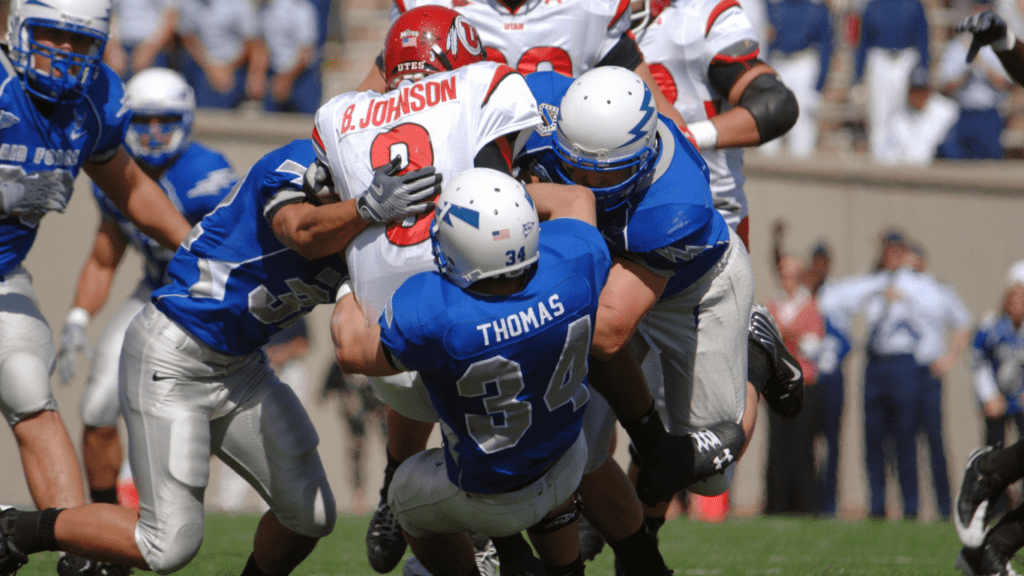What Are Football Odds?
Football odds indicate the potential outcomes of a game and the corresponding payouts from bets. By understanding these odds, I can make more informed betting choices.
The Basics of Betting Odds
Betting odds come in three primary formats: fractional, decimal, and moneyline.
- Fractional Odds: Common in the UK. They show potential profit relative to the stake. For example, 5/1 means for every $1 bet, I can win $5.
- Decimal Odds: Popular in Europe and Australia. They represent the total payout rather than profit. Odds of 6.0 mean a $1 bet returns $6.
- Moneyline Odds: Standard in the US. They indicate how much I need to bet to win $100 (negative) or how much I’d win from a $100 bet (positive). Odds of -150 imply I must bet $150 to win $100.
How Odds Relate to Probability
Odds also reflect the implied probability of an event. To calculate the probability from decimal odds, I divide 1 by the decimal odds. For example, odds of 4.0 imply a 25% chance (1/4.0 = 0.25).
- Fractional Example: 4/1 odds imply a 20% probability (1/(4+1) = 0.20).
- Moneyline Example: Negative odds of -200 imply a 66.7% chance (200/(200+100) = 0.667), while positive odds of +200 suggest a 33.3% chance (100/(200+100) = 0.333).
Understanding these basics helps me evaluate the likelihood of different outcomes and potential returns from my bets.
Types of Football Betting Odds
Understanding football betting odds is crucial for making informed bets. There are three main formats: fractional, decimal, and moneyline.
Fractional Odds
Fractional odds, common in the UK, show potential profit relative to the stake. For instance, odds of 5/1 mean a $1 bet returns $5 profit plus the original stake.
The formula is straightforward. If the odds are A/B, the profit is A for every B bet. Familiarity with fractional odds helps since many historical contexts use this format.
Decimal Odds
Decimal odds, prevalent in Europe, represent the total payout, including the stake. For example, odds of 2.50 mean a $1 bet returns $2.50, including the stake.
The formula is simple: total payout = decimal odds * stake. Decimal odds streamline calculations, making them accessible to beginners.
Moneyline/American Odds
Moneyline odds, standard in the US, show how much profit can be made on a $100 bet (positive) or how much to bet to win $100 (negative).
For example, +200 means a $100 bet returns $200 profit, while -150 means you must bet $150 to win $100. Understanding the difference between positive and negative moneyline odds is key since they provide a clear picture of the most likely outcomes.
In this guide, comprehending these types of football betting odds equips you to navigate and make informed decisions, enhancing your overall betting strategy and potential success.
Reading and Interpreting Football Odds
Reading football odds may seem complex at first, but understanding them is essential for making informed bets.
Identifying Value in Odds
Finding value in odds means spotting potential profit opportunities where the bookmaker’s implied probability underestimates the actual probability of an event.
I compare the odds provided with my own assessment of the event’s likelihood. For example, if the implied probability of a team’s win is 40%, but I believe the actual probability is 50%, the odds offer value. This discrepancy is key to successful betting.
Calculating Potential Payouts
To calculate potential payouts, I multiply the stake by the odds. For decimal odds, the formula is simple: Payout = Stake x Odds. If I bet $50 at odds of 2.50, my payout will be $125.
Fractional odds require converting the fraction to a decimal first, then using the same formula. With moneyline odds, the calculation depends on whether the odds are positive or negative.
Positive odds show how much profit can be made on a $100 bet (e.g., +150 means $150 profit on $100). Negative odds indicate how much needs to be staked to win $100 (e.g., -200 means staking $200 to win $100).
Understanding these calculations is crucial to evaluating potential profits and making strategic betting decisions.
Tips for Beginners on How to Use Betting Odds

Understanding football odds isn’t just about recognizing formats; it also involves effective strategies and budget management.
Managing Your Betting Budget
Having a budget ensures disciplined betting. Set a specific amount and stick to it, avoiding the temptation to chase losses. Consider dividing your budget into smaller units.
For instance, if you have $200, break it into 20 units of $10 each. Bet only a small percentage of your total budget on any single bet, typically between 1% and 5% based on your risk tolerance.
Monitor your spending and adjust bets accordingly if you experience losses to maintain control over your finances.
Strategies for Beginners
Use strategies to improve betting outcomes. Focus first on one league or team to gather detailed insights. Research team statistics, player forms, and past performances.
Leveraging this data increases the accuracy of your bets. Learn to identify value bets by comparing bookmakers’ odds with your perceived probabilities.
For example, if you believe Team A has a 60% chance of winning but the bookmakers’ odds suggest they only have a 50% chance, this is a value bet. Start with simple bets like match-winner or over/under rather than complex accumulators.
Keep records of your bets, analyzing outcomes to understand what works and what doesn’t, which refines your betting strategy over time.


 Carolyn Miller is a skilled article writer for Play Daily Win Big, where she channels her extensive knowledge and passion for the gaming industry into compelling content. Her writing reflects a deep understanding of betting trends, gaming strategies, and the latest industry developments. Carolyn’s articles are meticulously researched and crafted to provide readers with valuable insights and practical advice. Her work not only enhances the gaming experience for enthusiasts but also offers strategic guidance that can be crucial for both casual players and seasoned professionals.
Carolyn Miller is a skilled article writer for Play Daily Win Big, where she channels her extensive knowledge and passion for the gaming industry into compelling content. Her writing reflects a deep understanding of betting trends, gaming strategies, and the latest industry developments. Carolyn’s articles are meticulously researched and crafted to provide readers with valuable insights and practical advice. Her work not only enhances the gaming experience for enthusiasts but also offers strategic guidance that can be crucial for both casual players and seasoned professionals.
